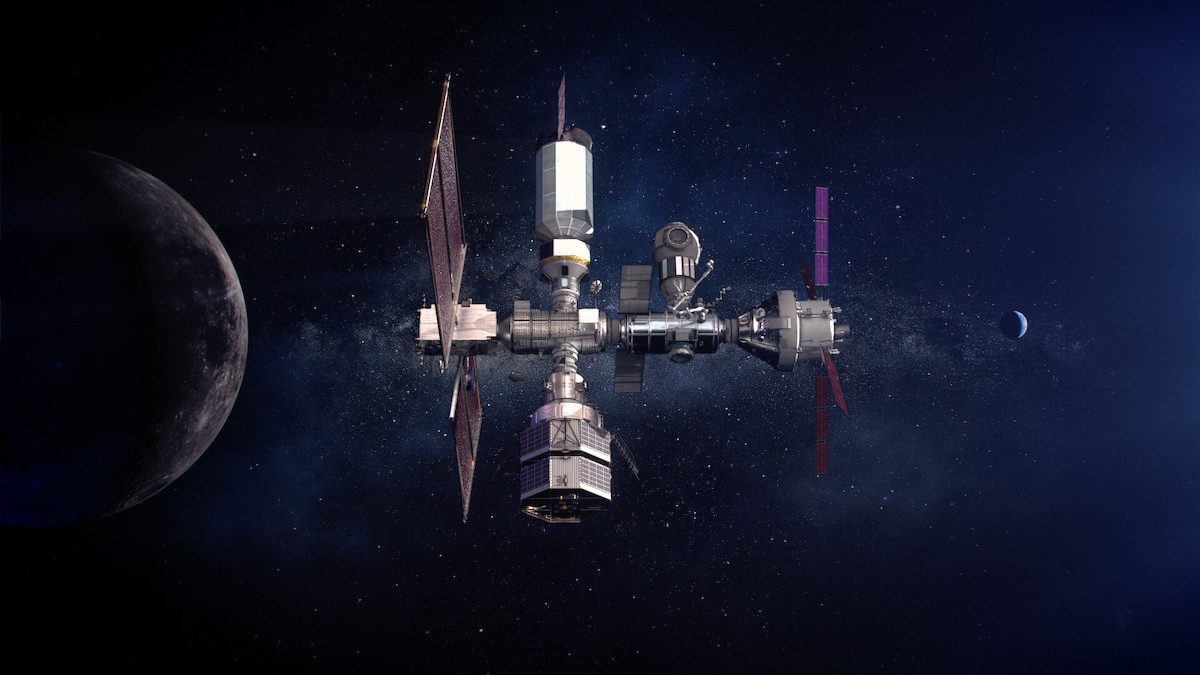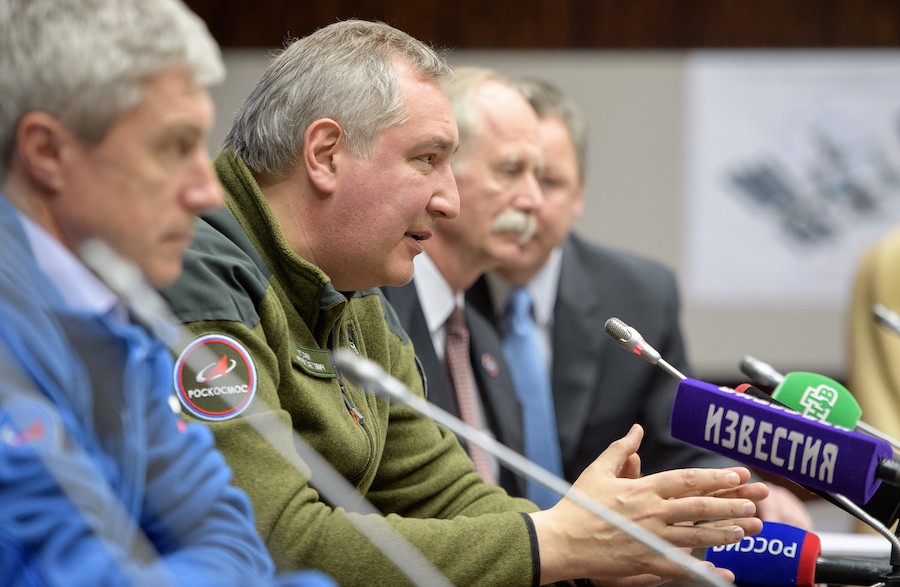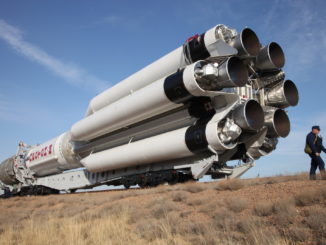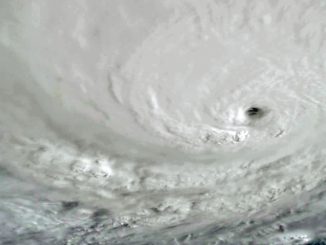
The head of the Russian space agency said this week that the the Gateway mini-space station NASA plans to build around the moon is “too U.S.-centric” and added that Russia unlikely to significantly contribute to the project.
Dmitry Rogozin, director general of Rocsosmos, said Monday that Russia is open to considering a life extension of the International Space Station in Earth orbit until 2028 or 2030.
“Roscosmos is determined to maintain accommodation for cosmonauts in low Earth orbit no matter which decision is finally taken regarding the ISS,” Rogozin said in a virtual panel Monday with the heads of the world’s largest space agencies to open the 71st International Astronautical Congress.
But Rogozin was less enthusiastic about joining the Gateway partnership, a major part of the NASA-led Artemis program aiming to return astronauts to the moon’s surface by the end of 2024, and develop a “sustainable” human presence near the moon by 2028.
“This is a good opportunity to mention the lunar Gateway project,” Rogozin said. “Our American partners are actively promoting it. In our view, lunar Gateway, in its current form, is too U.S.-centric.”
NASA plans to launch the first two U.S.-built elements of the Gateway station — a power and propulsion module and a pressurized human habitat — as soon as 2023. Larger habitation modules are planned by the European Space Agency and Japan, and Canada is developing a robotic arm for the Gateway.
ESA is also developing a communications and refueling module for the Gateway, and other international space agencies could contribute to the project. NASA foresees the Gateway as a staging point for lunar landers traveling to and from the moon’s surface, offering a location to refuel reusable landing craft and conduct scientific research.
NASA and seven other countries on Tuesday signed the Artemis Accords, an international agreement that NASA said establishes “a practical set of principles to guide space exploration cooperation among nations participating in the agency’s 21st century lunar exploration plans.”
The United States was joined by Australia, Canada, Italy, Japan, Luxembourg, the United Arab Emirates, and the United Kingdom. Other nations could sign the Artemis Accords in the future.
“Russia is likely to refrain from participating in it on a large scale,” Rogozin said of the Gateway.
But Rogozin said Roscosmos wants to ensure its next-generation Orel crew spacecraft can dock with the Gateway. The Orel spacecraft is in development to replace Russia’s Soyuz crew capsule, and will be designed to carry astronauts into low Earth orbit and destinations beyond.
The Orel spacecraft “is designed for future national manned missions, and should the need arise, it can also be used for the benefit of our partners as a backup option to launch astronauts into space or bring them back from orbit,” Rogozin said.
“Talking about our program, it’s a national program, first and foremost. The United States, together with its partners, is pursuing its Artemis program,” Rogozin said. Even if Russia does not take the opportunity to participate in the Artemis program, that does not necessarily mean that our craft should not be adapted to dock with each other.”
NASA’s Orion spacecraft is planned to be the the primary ship transporting astronauts between Earth and the lunar Gateway.
“A flight to the moon is associated with a high risk,” he continued in a press conference Monday. “This is why we need to have at least two space transportation systems, and if Russia builds its own space transportation system, we need to have the opportunity to dock with (Gateway).
“This is why we say that in any case we (want) harmonization of standards and standardization of interfaces, even if we pursue two standalone programs,” Rogozin said.

In a written statement released after Rogozin’s comments, NASA Administrator Jim Bridenstine expressed support for standardized docking interfaces.
“The U.S. and its commercial and international partners look forward to working with the international community to ensure that interoperability and shared standards are the cornerstone of future space architectures, including the Gateway and other aspects of the Artemis program,” Bridenstine said.
Rogozin said Russia would consider greater participation in the Artemis program if the international partnership was modeled on the set of inter-governmental agreements that govern the International Space Station program.
“The most important thing here would be to base this program on the principle of international cooperation which were used for the ISS program,” Rogozin said. “We all know that on-board the ISS, we have a crew commander. But regardless of that fact, all decisions are being taken collectively.If we could get back to considering making these principles as the foundation of the (Artemis) program, then Roscosmos could also consider its participation.”
Rogozin also said Russia is eager to pursue “open and friendly relations with China and the China National Space Administration. We believe there is more to come in these relations.”
China is developing its own space station in low Earth orbit. The first section of the station could launch next year, and astronauts will live aboard the complex for months at a time.
Chinese officials have said they are also planning to build a lunar base near the moon’s south pole, where permanently-shadowed craters hold vast reserves of water ice that could be harvested to make fuel, drinking water, and oxygen.
NASA is barred by law from partnering with China’s space program.
Email the author.
Follow Stephen Clark on Twitter: @StephenClark1.



